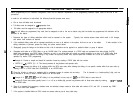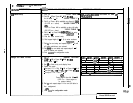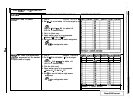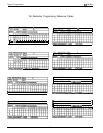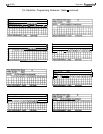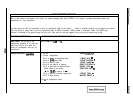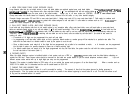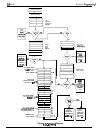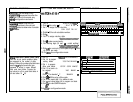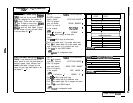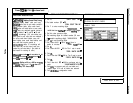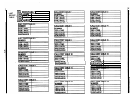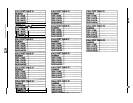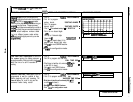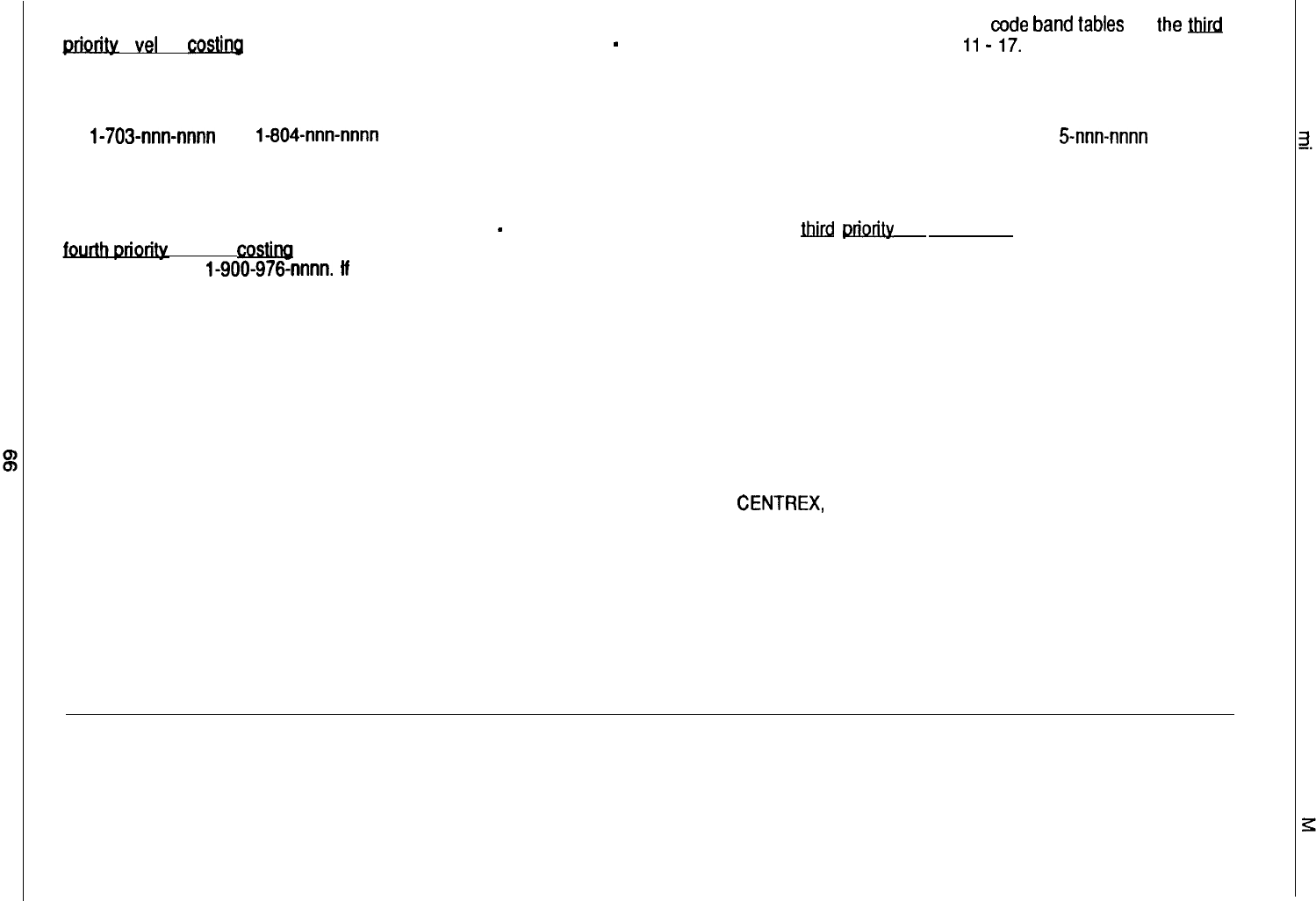
4. AREA CODE BAND TABLE (LONG DISTANCE CALLS)
Long distance calls that do not match entries in zone call band tables are matched against area code band tables.
Area
co&
band
tables
are
the
m
vel of
CQsfinQ
for long distance calls. Area code band tables 1
-
7 are associated with call rate costing tables
11
-
17.
Use area code band
tables to cost calls based upon the area code of the called number. Assign any or all area codes nnn (200-999)
to one
of
seven different bands.
Group area codes into bands based on frequently called areas, distance from the caller, or any other desired category.
Example: Assign area codes 703 and 804 to area code band table 1. Assign area code 415 to area code band table 7. Calls made to numbers such
as 1-703-nnn-nnnn and 1-804~nnn-nnnn are costed with values assigned to call rate table 11. calls made to numbers such as l-41 5-nnn-nnnn are
costed with values assigned to call rate table 17.
5. CALL RATE TABLES (LOCAL AND LONG DISTANCE CALLS)
Local calls and long distance calls that do not match entries in any exception table, office code band table, zone call band table or area code band
table are matched against entries in any call rate tables 2
-
33 and costed accordingly. This is the
It&l
prioritv level of costing for local calls and the
vel of
co-
for long distance calls. Call rate tables are also used to cost any calls that require special or extraordinary rates such as
i-800-555-1 212 or 1-900-978~nnnn. lf a matching call rate table can not be found, calls are costed by call rate table 1 (the table of last resort for
costing all calls).
l
A maximum of 16 digits can be programmed into each call rate table.
l
In programming a call rate table, select digits so that a particular dialed number or number group will be matched to a particular rate table. The
table with the best match to a dialed number is used by the system to cost the call.
l
Since a dialed number must match all of the digits that are programmed into a table to be considered a match, a # character can be programmed
into the table In place of a specific character to serve as a “match anything” digit.
l
If a dialed number does not match all of the digits programmed into any call rate table, the system costs the call with the values programmed into
the call rate table of last resort (table 1).
6. DISCARD DIGITS
When the digital telephone system is installed behind a host system such as a PBX or CENTREX, access codes must be dialed before obtaining an
outside line dial tone. These access codes should be removed so that calls are costed based on just the actual telephone numbers dialed. Up to six
different access codes entries with up to eight digits per entry can be programmed.
Example: If the system is installed behind a PBX using a 9 as an outside line access code, program a 9 as the discard digit. When a number such as
9-555-l 212 is dialed, the 9 is discarded and the call is costed based on 555-l 212.
7. DIALING TIME AND ANSWER TIME
Dialing time is not included when the time of a call is recorded for costing. The amount of time that the system ignores for dialing purposes is
programmable. Plus, the system can be programmed to wait for a period of time before beginning to record costs for a call. This wait time allows a call
to ring and be answered before it is costed.



